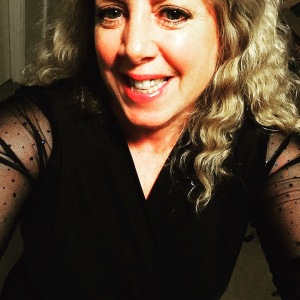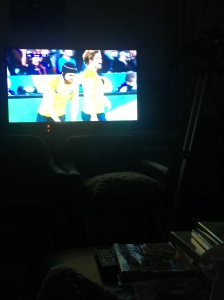Brand + Business x Christine Moody*

Branding is no longer the domain of companies. Successful executives and entrepreneurs are realising the need to cultivate and manage their personal brands to maximise and increase their business opportunities. Whether you like it or not, each and every one of us has a personal brand. This ‘Brand You’ can be managed in the same way corporate brands are managed—with authenticity, with your unique story, and by highlighting your unique skills.
How you manage your personal brand is particularly relevant to to those of us who wish to pursue a non-executive director roles on boards. Obviously the pre-requisites for board’s consideration are assumed—meeting the selection criteria in the position description for the role—but how do you create a personal brand that ensures that you stand out for consideration for board roles?
According to the Australian Institute of Company Directors, “The board is responsible for ensuring that it has represented on it the skills, knowledge and experience needed to effectively steer the company forward. Directors will be appointed to the board because their specific skills, knowledge and experience will fill particular gaps on the board. It is important to acknowledge that not all directors will possess each necessary skill but the board as a whole must possess them.”
Why a differentiated personal brand important?
Apple is an example of a great brand. Apple—the corporate brand—encompasses every detail or ‘touch point’ that comes in contact with the customer eg, Apple has beautifully designed, customer-centric products presented in purpose-designed packaging and contained in an innovative carry bag. The Apple website is easy to navigate and both the layout and the language align with the Apple ethos of simplicity and creativity.
So, taking the Apple example, we can apply this to understanding the power of great personal brands. When thinking of great personal brands we think of Barack Obama and his ‘presence’ at G20 Brisbane last year—particularly his speech at The University of Queensland—and his brand style eg, the way he walks confidently down the red carpet at events. We can think of Australia’s Gail Kelly (formerly CEO, Westpac Group) and how she presents at corporate events including the tone of her voice, her corporate wardrobe, and the quality of her presentations.
The personal brands of these high-profile leaders are deliberately and purposefully designed to create a brand that is unique, authentic, and at the same time being in line and ‘on brand’ with the organisations they represent. Every single detail is considered and aligned with their desired personal brand.
Personal branding has become even more important with the growth in the use of social media.
Personal branding has become even more important with the growth in the use of social media. Personal branding has become even more important with the growth in the use of social media. Social media is personal by the very nature of the medium—Resume, LinkedIn, Facebook (personal and professional) et al. So these days, everyone has a personal brand and everyone needs to be in control of the management of their brand. It is important to ensure your personal brand message is consistent across each and every 『touch point’. Key to creating a differentiated and consistent personal brand is about delivering the entire brand package so you can carve out a niche and stand out from the crowd in an ever-increasing and competitive professional arena.
Where do you start with your personal brand audit?
If you are serious about board roles you have to be strategic. Firstly you need to audit your personal brand to find out your strengths and how these will fill the gaps on particular boards. Finding and highlighting your unique skills and experience will enable you to target potential board roles. Similar to a corporate brand, you need to find your own personal point of difference and promote this point of difference in everything you say and do. The outcome of your personal brand audit is to translate your brand’s point of difference across all your ‘touch points’—those points in which you present yourself e.g., your business card, linkedin profile, and other social media platforms.
The starting point of the personal brand audit is to ask yourself a series of questions to reveal your point of difference. The idea is to peel back the layers to reveal your unique qualities and then to highlight these to organisations whose boards need your skills the most.
The questions cover four main areas—including your competitive advantage; demonstrating your value; your specialist skills; and what boards would require your skills? The audit questions include:
> what are my unique and specialised skills that I can bring to boards?
> what organisations have boards that would require my particular specialist skills?
> who do I know that has similar skills to mine who are currently on boards that I can talk to?
Once you have completed the questionnaire, you need to apply the finding to your ‘touch points’. Your personal brand includes your qualifications, your work experience, and your career success but also includes the visual aspects of your brand—your personal brand identity. This includes the way you dress and your behaviour and also the 『touch points’ of your brand identity—eg, the layout and quality of your business card and resume. No detail is too small to consider—eg, the style and quality of your photograph on your LinkedIn account.
The systematic approach includes the creation of your personal ‘mood board’—how you see yourself and how this aligns with your current and future brand initiatives. This outcome of this process is to create an authentic visual brand identity that aligns with your targeted industry sector and your skills. This process is time consuming but it is worth the focus and the time. You need to take control of your personal brand and differentiate yourself to stand out. Personal branding is a powerful tool in your professional toolkit.
This article originally appeared 24 November 2015 Directors’ Australia Blog.
*Christine Moody is one of Australia’s leading brand strategists and the founder brand management consultancy, Brand Audits. With more than 30 years’ professional experience, Christine has helped a diverse client base of local and international brands, including Gold Coast City Council, Hilton Hotels, and Wrigleys USA, to develop, protect and achieve brand differentiation. Her particular interest is personal brand audits to assist executives realise their full potential.
For more information: chris.moody@brandaudits.com.au or +61 419 888 468.


